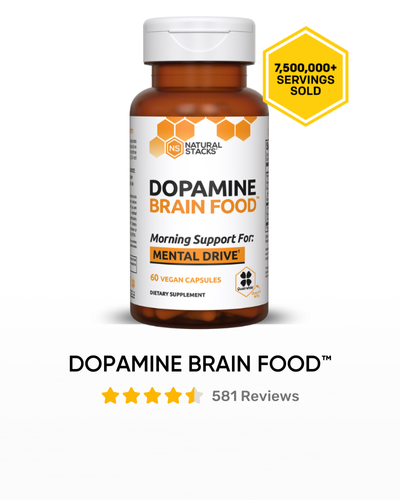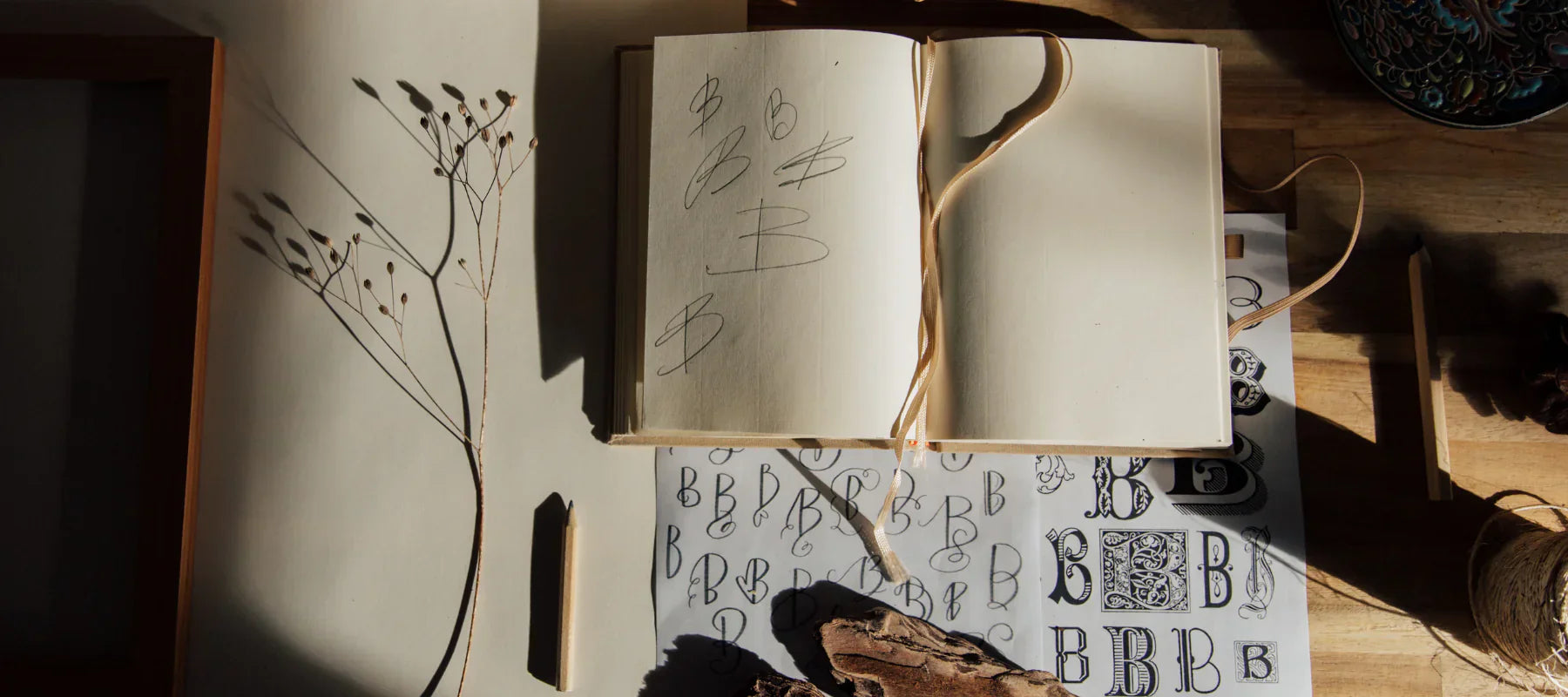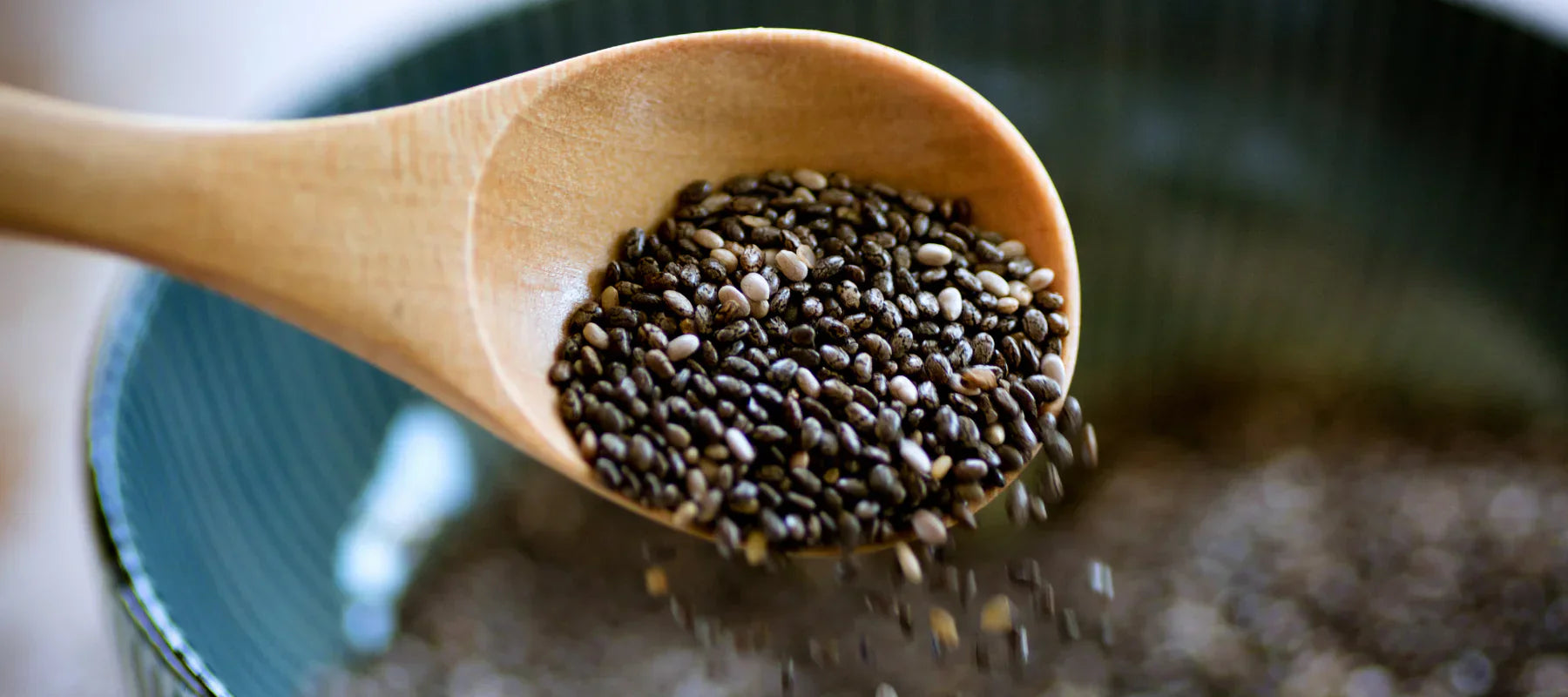Primal Movements and Crawling with Tim Anderson

Tim Anderson of Original Strength drops by the Optimal Performance Podcast this week to discuss human movement patterns, crawling, fixing pain and creating master movers.
"If you're unstable on all fours, what the heck are you doing on 2?"
Get ready to optimize your foundation, your strength, and your movement in this unique and fun episode of the Optimal Performance Podcast!
What You'll Hear From Tim Anderson:
- Fact Of the Day: The spring in your step really is "use it or lose it"
- An original Anti-aging secret
- The original strength training - "if you're unstable on all 4, what the heck are you doing on 2?"
- How crawling can kick your butt, save your life, and transform your body.
- Are you FIT enough to pass this crawling challenge?
- Why protein powders are better than actual cows and how to make awesome protein puddings!
- "If you can own slow, you can own fast." - how this lesson can help you optimize EVERY aspect of your life!
- The meat thermometer analogy: "Butt Up = Abs DONE!"
- The Original shoulder rehab movement - end shoulder pain!
- Tim's 3 Best Tips to Live Optimally
Unfortunately, we had technical difficulties that prevented us from using Tim's video.
Links & Resources:
Tim's Books:
- Becoming Bulletproof
- Returning To The Original You
- Original Strength Performance: Becoming The Superhero You Were Meant To Be

- 1 scoop Natural Stacks Natural Protein
- 1 Egg White
- 2-4oz Cashew Milk or Almond Milk (more or less for desired consistency)
- (OPTIONAL) 1 scoop Natural Stacks Prebiotic+ (extra thickening + gut health)
- You can get creative with flavors and add-ins too: nuts, fruit, almond butter, 100% dark chocolate, cocoa nibs, and more.
Combine all ingredients in large bowl and refrigerate for at least 30-45 minutes. The collagen & colostrum in Natural Stacks Natural Protein help the pudding set and make it extra thick compared to whey only powders - plus they ADD extra benefits for joint health, recovery, skin, and more!
Original Strength Training, Primal Movement and Crawling, with Tim Anderson
Ryan: You're listening to the Optimal Performance podcast sponsored by Natural Stacks. This is the show everybody who's into performance and bio hacking should listen to. If you want to know more about Optimal Performance check out www.optimalperformance.com.
Alright, happy Thursday all you optimal performers, and welcome to another episode of the Optimal Performance podcast, sponsored by Natural Stacks. Our guest today is Tim Anderson of Original Strength Systems. Tim is a really cool guy and he is the author of 'Regaining the Body You Were Meant to Have'. I saw Tim speak at Wake Forest in January and knew that he would be a great, great guest for this podcast. So today we're going to be talking a lot about integrity of movement. Crawling, core strength, creating better movers and therefore better athletes. And as you can hear from the title of his book, again, Regaining the Body You Were Meant to Have. So before we jump to Tim and get really deep into this, you know it's time for the Fact of the Day!
So today's fact of the day comes from a post written by Clarence Bass. Since we're talking longevity and movement patterns and using the body, this is a really cool point of information where 'Physical Dimensions of Ageing' was published by Human Kinetics in 1995. It is part of a study done at the University of Texas by Dr. Waneen W. Spirduso, and what they found was that champion powerlifters between the ages of 40 and 75 had little or no difference between upper and lower body strength losses. So as long as we continue to use what we have, we won't lose it.
And that especially counts when we're talking about the proverbial step, or being explosive, or the spring, you know. And Clarence Bass in this post specifically talks about people losing the spring in their legs when they get older, and how some old people literally cannot jump up on a kerb. So keep that in mind as you listen to our podcast today. We're really talking about regaining what you had, keeping it, maximising it, and holding onto it throughout the duration of your life because that is what we are all about here at Optimal Performance. Not only maximising it for today, but for the rest of your life.
So before we get back to Tim, we're going to read some of our reviews from iTunes. As you guys know, we launched first 3 episodes and really, really great reviews. So you guys keep these coming on iTunes. Here's one from Strange Joy: "Just getting into the world of biohacking. This podcast is a great source of information". How about, @producerwest: ""very quality information from a diverse range of guests. Everything from sleeping, diet, nutrition, intermittent fasting, physical training, supplementation, professional athletics and general biohacking. Stoked the Natural Stacks team finally has a podcast. Looking forward to the future!". Um, let's see, here we go. "Loved it, would recommend it to anyone!" Thank you, Yurivo88. "Great fitness podcast!", Nick's Travel Bug, and let's go one more. Ben Hanna, "this podcast is great. Featuring a wide variety of guests, covering physical and mental side of performance. Can't wait to see what they come up with next!"'.
So next, you guys, is going to be Tim Anderson. This one is gonna be really cool so let's dig right in. So, Tim, why should our listeners care about crawling and what does this have to do with what we're looking for in terms of optimal performance?
Tim: Well, first of all, Ryan, thanks so much for having me.
Ryan: Of course! Thank you!
Tim: So, people should care about crawling because crawling is the foundation of our gait pattern. That is where we.. As a child we set our posture with crawling, we developed the curves in our spine and our lumbar and our cervical curves and our lumbar curves, and it's where we teach our stabilizers how to stabilize our joints so that our prime movers can move. So, the most important thing is that that it is truly the foundation of your gait, where your opposite limbs start working together and moving together in coordination. And that's really important because we're supposed to walk. And we're supposed to be good, efficient walkers. And walking is, if you walk properly, walking actually helps keep you tied together and keeps you very strong. And it's great for your brain as well.
Ryan: Awesome. So we know here at Optimal Performance that walking and general exercise can be great for getting blood flowing and the creative process and stuff. So you kinda started on that, so let's dig in a little deeper and elaborate on that. So you know, it sets the foundation for our gait. What does that mean, and are you saying that most people have a flawed gait or a flawed walking pattern?
Tim: Well, yeah I guess I'm kinda saying that. Like if you look around, if you go people watching or to the airport or to the mall, you'll see people walking and they'll have phones in their hand or they'll have briefcases or backpacks or suitcases in their arms and even people who don't have anything in their arms, you don't often see them matching their shoulder swing with their hip swing. And our joints, we're designed so that our opposite limbs are supposed to move together and our opposite joints actually mirror each other so when the knee goes into flexion, the opposite elbow goes into flexion. When the hip goes into extension, the opposite shoulder goes into extension.
So, when people walk they're still supposed to use 4 limbs just like they do when they crawl. So, we're not you know, we do stand on 2 feet, but we still use all 4 limbs when we walk from point A to point B. And most of the time you will see that hardly anybody does that like they should. And it stands out when you see it because it looks beautiful. It looks very graceful. It looks like somebody's got somewhere to go, they're confident and you know, they're walking with a purpose. Otherwise, what you normally see is just people walking, their head is down, their shoulders may be slumped, there's very little swing in their arms and if there is then it's probably coming from their elbows. It's just not graceful.
Ryan: So, I'm a strength coach, and as somebody who loves elite performance and seeing great movers move and do what they do, you know, when I people watch when I'm in public that stuff stands out to me. And I know as somebody who's helping people in the gym setting that those flawed patterns lead to pain. So, touch on that for us a little bit. You know, that's kinda where we want to go with this. Is you know, why should people care?
Tim: Well because if you're not doing this correctly then it's going to lead to some sort of dysfunction, pain, or other bigger issue. So, like I said, crawling it is the foundation of your gait pattern, but it's also the foundation of you. So when we learn to crawl, our entire body's actually getting tied together. We're actually tying our center together and that allows us to move freely so when you're on your hands and knees and you're crawling, like again your rotator cuffs learn how to stabilize your shoulders, the rotators in your hips learn how to stabilize your hips. Your joints are all integrated together in one motion, your ankles, your knees, your hips, your shoulders, your spine, your wrist. All those joints get integrated into your brain as one being. So they're not, we're not separated into tiny parts. So that when we stand up in the world and start walking, everything is integrated and tied together again and everything's moving properly.
So what crawling does is it establishes our reflexive strength, which is the foundation that all our movement and strength expressions are based off of. And when you have your reflexive strength what you really have is reflexive control. So the ability to express yourself, all the strength you are designed for, all the mobility you are designed for, whatever your hobby is, whatever your sport is, you have that ability to express it and express it well. I liken it to Mikhail Baryshnikov, the dancer that is just so beautiful that everybody knows, he has all of his reflexive control and he expresses himself so beautifully that it makes people pay attention. But we're all supposed to be able to move like that. And we all get that from developing our reflexive strength and from all those developmental stages that we had as a child that were designed to get us up on 2 feet so that we could move freely and gracefully like a ballet dancer.
Ryan: Right. So, for our listeners, what's an easy way.. You know, I've seen you speak in person so when you speak in person you're able to demonstrate a lot of these things and show an example. For our listeners, who maybe driving in a car or otherwise not able to see you demonstrate these things, what's an easy way for them to kinda self-assess or to determine where those flaws may be and ways for them to kinda practise and start working on being able to demonstrate that reflexive strength and control?
Tim: Well, oh my gosh. There's so many areas that we could go for for your listeners. One would be, the easiest place to start, is have them lie on the floor and just relax and breathe and try to learn where they're breathing at. Because if they're not breathing using their diaphragm, and if they're not breathing down into their bellies well when they're chest breathers which is where they're using their emergency muscles to breathe, their fight or flight muscles. So that right there, if they learn that then I can guarantee they're lacking a lot of reflexive strength already because the diaphragm, your breathing muscle, is what really gets your whole inner core unit working properly.
It works your pelvic floors, your multifidus, your transverse abdominals, all the muscles around your spine, they all work together with your diaphragm to create a solid center, and that is so important for us because as people when we move, the forces that we generate cross through our center, or they should, and the energy should go through that solid center so we don't get hurt, but most people, we're stress breathers, and we breathe up in our chest and our neck so it's like having a hollow center.
The easiest way to explain that is the difference between a baseball and a wiffle ball. You can hit the same baseball a hundred times or 2000 times and still use it even if the cover comes off, because it's solid. But if you a wiffle ball two or three good times, the shell cracks because it's hollow and that energy goes around the outside and it cracks the shell. So we're made to be solid in our center, so the floor, the ground is the best place to go. Just like you did when you were a child. To redevelop all of those developmental patterns that we were given as children to get us strong enough to walk. And again, I would just start with breathing.
Ryan: Okay. Well before we get into crawling, you mentioned 2 things that I wanna build on and kinda elaborate on in that. So, number one, with breathing- simply breathing. You know, there's a lot of new scientific evidence showing that when we lose bodyfat that the fat is actually expelled as carbon dioxide which is what you exhale when you breathe. Anecdotally, I don't see a lot of lean, fit people like yourself who have flawed breathing the way that we would see in an obese person. And likewise on the other side of that same coin, most people who are morbidly obese will demonstrate some sort of flawed breathing. I don't know if that's chicken or the egg, I think that's a lot of anecdotal evidence, but something to pay attention to.
And then also, when we breathe you mentioned a lot of times, if we have those flawed breathing patterns and we're breathing into our chest cavity that's a sign to our body that we are at capacity. It elicits a stress response. So even if we're sitting at our computer and we're not actually in stress, physically, when we breathe into our chest our body thinks that we're in stress or we're being stressed and you know, cortisol is released and we don't want that all the time either. So just some more things to pay attention to as far as breathing goes. So, Tim, kinda keep building on that for us, if you do get in the floor and you get the breathing down, we're breathing into our diaphragm, our core is now solid, if we start with some of the crawls, what are we looking for and how do we wanna go about that?
Tim: Okay, so when we get down on the floor to crawl, I would just have anyone start out on their hands and knees. And what you're looking for is: can you keep your head up? And keep your eyes on the horizon? Most people, it's funny, when adults assume they can crawl and then they find out otherwise when they get down on the floor, because maybe they can't keep their head up, their chest sinks and their back rounds like a bridge, so they've lost their posture. Or when they start crawling they can't even coordinate the opposite limbs moving together, and that usually is a huge eye opener for the adults that I've dealt with because it makes them wonder 'why can't I crawl?', and my question is, 'if you can't crawl on the floor, and that's the foundation of your gait pattern, then how are you walking?!' and then, because most people when they wanna get healthy instead of walking they'll go out running. They skip walking and go straight for running. Well, if they're not crawling well then how are they running, which creates so much more force through the body?
Ryan: Yeah, and I love that.. I'm so glad that I saw you speak on this because ever since then that's been a great conversation weapon for me to use with those people, like you said, who wanna jump straight into running. Well if you can't crawl and maintain spine, pelvic, shoulder integrity on all fours, then what the hell are you doing on two and what do you think is happening to your ankles, your knees, your hips, and all those other joints, every time they take that pounding? Running is a single leg dynamic, repetitive movement, you know, and that's way, way down the road in terms of progression from crawling
Tim: So yeah, children are so.. We can learn so much from watching them, but a child, you know, they're persistent. And they earn or they build the strength they need to get up and to walk and then they still learn how to move as they're doing that. So even when a child learns how to walk he still spends so much time on the ground, solidifying that solid foundation. But children don't start from learning how to pick their head up off the floor to running sprints. They just, they don't do that. As a matter of fact, children don't start doing pullups as soon as they hit the monkey bars either, they spend time learning how to hang and swing and developing that strength to do pull ups. Everything they do is a very, very wonderful progression, but adults, we go right for the end. We don't like to go from the beginning, you know, we wanna read the end of the book first. And I think that's where we get into trouble. Especially when it comes to running, because so much force is generated when we run and if the body's not ready for it then it can be disastrous.
Ryan: Agreed. And the whole 'adults wanting to read the end of the book first' could be a whole other podcast on psychology and you know that stuff. So we'll save that for another day!
Tim: I agree!
Ryan: Well we won't go down that rabbit hole, but you know, in terms of crawling, I love these because they can be programmed for so many different purposes or uses in a workout or a training setting, so I wanna, you know, I'll list a couple of the typical uses, but if you have any other uses then definitely let us know. But I want you to kinda tell us and explain how we would program each of these uses. So you know, crawls can be used as preparation, as warm up for the work out to be done, they can be used for mobility, for actual strength building, they can be used for fat loss, for neurological resets. Talk a little bit about, you know, like I said, the different ways that we would set up sets and reps. How would we progress these? How do you kinda quantify some of that stuff? Where do you put each use in the workout?
Tim: Um, wow. Well this one could be tough! I don't really deal with crawling as far as sets and reps go, I either deal with it in steps like crawl for 20 steps, or I deal with it in time, like crawl for 2 minutes. But crawling because of the nature of it.. So every time you crawl it's a neurological reset, regardless. You're using both hemispheres of your brain and making them very efficient, you're making your brain very efficient and therefore you're also making your body very efficient
Ryan: Can you explain that one a little bit for everybody? Because I think that's something that will be of interest to our listeners
Tim: So, the right side of your brain controls the left side of your body, and the left side of your brain controls the right side of your body. And, when you crawl, you get the left side and the right side of the brain communicating together and laying neuroconnections down together. So when a child learns how to crawl, he's really developing his brain. The cool thing is, when an adult learns how to crawl, or revisits crawling, he's redeveloping his brain and cementing more wonderful neuroconnections. The benefits are better focus, better emotional balance, better thoughts, better memories, everything is better in the mind itself. The other thing for that is the body starts to move better as well because also when you crawl, every single step you take, you are giving your brain information and your brain is sending back a reflexive response to tell your muscles what to do without any conscious thought on your part. So it is literally gentle reflexive strength training.
Ryan: That was beautiful
Tim: So, in doing that, so again, no matter when you crawl, no matter if it's before you work out, after your workout or in the middle of your workout, it's a neurological reset and that is important because literally what that means is that it refreshes your nervous system and it allows you to train harder and longer because you can recover faster. Because you can only train to the limit of what your nervous system can handle. But if your nervous system's always fresh then your movements are always clean, they're always clear and crisp. And that is why crawling is so powerful before, during or after a workout.
Ryan: That's awesome. That's why we love crawling. Because you get smarter, more focused, happier, better nervous system function, work out harder, longer. What's not to love, right?! I mean that's everything that's we're chasing.
Tim: Exactly. So, here's the thing, for me. What I love about crawling is that you can absolutely use it for your entire strength training session. Um, I totally abandoned lifting weights for almost 2 years and I mostly just crawled. I crawled for time, I crawled dragging things, or whatever, or just body weight. But I'm stronger now than I've ever been. I definitely feel better. And it was weird, like the proof is in the pudding, I know. But I went back to things, weights I hadn't touched in over a year, 2 years, and I could do the same and more with the weights, and that's kinda unusual as far as weight training goes.
Ryan: So, for somebody who's not a strength coach and may not you know, know how to go through in their head, the way that you would, and build an entire workout program out of just crawling, what would that look like? If our listeners wanted to say, 'oh hey, that's cool, I might try that for a week, or a month'. How would they train total body? And then you mentioned about crawling dragging things. That's obviously a progression from just doing a crawl with body weight.
Tim: Yeah, so um, so the progression from that, I guess if you were starting from ground zero, baby crawling. You would just want to develop the ability to crawl, baby crawl, for time. And I just used everything in 10 minute increments because it's just easier for me to wrap my head around. But if a person could baby crawl for 10 straight minutes without resting, while breathing in and out of their nose, while keeping their mouth shut, while keeping their tongue on the roof of their mouth, using their diaphragm the whole time, then I would think they're probably ready to start crawling on their hands and feet. And then so that's the progression.
When we crawl on our hands and our feet like a leopard or like Spiderman, keeping the butt down low, below the head, so the posture of the spine looks just like it did when you were a baby crawling. So we still have that wonderful reflexive posture that we're building, but now we've got a lot of time under tension because the body's elevated. So now, every single step we take is a muscular effort. But again, it's all reflexive. There's no cognitive thought. So if you can build that up for time, and it may start out that you know, 2 minutes is all you got. Great. Rest. And then when you recover, crawl for 2 minutes more, and rest, recover and crawl more. And you just add up your time per say, 10 minutes of crawling time. The cool thing is, for one, and this is really.. It's brutal, I'm not gonna lie. But..
Ryan: I've tried it! I can speak for this
Tim: But it's a neurological reset, so even though it's brutal, it's refreshing your nervous system with every single step. So that the next day you can do it again, the next day you could do it again. You could do it every single day of the week and the only thing that will suffer is your mind, because it gets to be a mental obstacle, a laborious challenge for your brain. But the body is fine. Anyway, you work up to 10 straight minutes of crawling forward, with your mouth shut, with your tongue on the roof of your mouth, with your butt below your head, and then once you can do that, then maybe you should try it backwards. Backwards is a whole other story. That's tremendous strength training right there. And it will glue you together better than anything I've ever come across. And then if you get good at that, then you start dragging things. You can tie a harness to you, drag a sled, drag a chain, or you can just drag things with your hands while you crawl. It gets to be a lot of fun, and it's challenging.
Ryan: That's awesome. So, when I saw you speak at Wake Forest, I got to see you run the girl soccer team through this, and I can say that seeing division 1 athletes be humbled by those leopard crawls is a real eye opener. You also mentioned time under tension. So from a muscle building standpoint, we know that we want, we need time under tension for hypertrophy. So if you think about, in a typical bodybuilding session we're looking at sets of 8-12 reps being ideal for that time under tension. And if we think, hey, a typical- we'll go real stereotypical here on our chest and shoulders, you know, bodybuilding workout- let's do 3 sets of 10-12 reps, 3 or 4 different exercises. So maybe we hit 10 total sets for chest, 10 total sets for shoulders, each set is 30 seconds, you know now we're looking at 300 seconds per chest and shoulders, of time under tension, in a workout that might take you 45 minutes to an hour at the gym. And then maybe you still have to do cardio afterwards.
So, what Tim just mentioned is that, you know, you can crawl for 2 minutes which is 120 seconds, rest, do that again. You can rack up more time under tension with your body weight which is also going to help engage your core, as you mentioned, Tim. It's going to do the neurological reset, it's going to refresh you, and if you're moving your body through space that long, that serves as the fat loss and the cardio effect that now you've basically doubled or even tripled your exercise efficiency. And it's easy to see how you got the results you were talking about earlier, when you switched to this type of workout?
Tim: One of the things that I've learned that it gives you is body mastery. Like, you are in complete control of your body, the speed at which it moves, every nook and cranny you fill in, there's no gaps. You fill in all the gaps. Even, even from a breathing standpoint, when you can crawl 10-20 minutes with keeping your mouth shut and never once opening your mouth while you're elevated, your diaphragm.. So it's a muscle right, so you have trained that muscle now, it has endurance as well. As an athlete, from a performance standpoint, you will never ever get tired on the field. And if you're not gonna get tired, your opponent, he's in trouble.
Ryan: Yeah, yeah. That's great. So a couple of times in talking about how to crawl, you mentioned butt and hips below head level. One of the rapid fire questions I was going to throw at you later on was the meat thermometer. So, when we start we want to have our hips and our butt below head level, what happens when we lose that? What does that tell us?
Tim: So just like when the butt pops up, the abs, the center is done. It takes a lot of strength from your core, from your center, to keep your butt down below your head, and the easiest explanation I have for that is: your Grandma sticks the turkey thermometer in the turkey at Thanksgiving to know when the turkey is done. When that little thermometer pops up, the turkey is done. When you see somebody's butt pop up, their abs are done and they're hurting, and they're looking for a place of comfort. So that's why the butt pops up.
Ryan: So if we're in a gym setting we're gonna shut people down, tell them to rest, wait til they're ready to go again. If somebody was gonna try this at home that's what they should do too, right? Shut that down. You know, let's say they were trying to go for 2 minutes or 10 minutes, and their butt pops up before the time is up, shut it down?
Tim: You could use that as a governor. My first governor would be to use the mouth, so when the mouth pops open for air, shut that down. Let's train the diaphragm. And then yes, if the butt also pops up, we got 2 options, we can say 'hey, let's get that down and see if we can hold it down longer', or completely shut it down and let them recover. Or just shut them down to baby crawl, because the butt can't pop up when you're baby crawling. So you just let them recover while they're baby crawling and get that reset. It's a legitimate good reset again, to let them recover before they get back on their hands and feet.
Ryan: Okay, cool. So another thing you said at Wake Forest that I really really loved was "people go fast to hide what they do not have. If you can own slow, you can own fast". I loved that and I've used that so many times since hearing you say that. Talk a little bit about the speed at which we want people to crawl and how that carries over to being a better mover and a better athlete.
Tim: Right, okay, so if you can crawl slow motion in slow motion, then that goes back to being a master of your own body. Especially if you're elevated, crawling on your hands and feet, and it takes you almost 10 seconds to crawl one step, so you've got 2 limbs in the air for almost 10 seconds as they're slowly moving to the ground before the other two come up. You will develop such a control over your body that no matter where you are, no matter what you're doing, that control will transfer over.
A lot of times people will hide things with their speed because: one, they either can't do something so they try to cover it up by moving fast, so they're trying to cover up sloppy movement, or it is uncomfortable, and they'll use speed to get out of an uncomfortable situation. A lot of people, they'll try to crawl very very fast on their hands and knees because it takes a lot of muscular effort, it's uncomfortable and they don't own it, and they're trying to get from A to B. And a lot of people, they'll... And this is just our society, because again, we look for the end of the story, the end of the book... A lot of people aren't really honest and they don't want to put in the uncomfortable time, to make sure they're doing things right, because they're just trying to hit the mark. And a lot of people don't care about the quality on the way to hitting the mark as much as they do, 'oh I just wanna hit the mark'. So anyway, speed is one of those leverages that people will try to manipulate to try to get around things or to cover up things. And you can't do that when you're going slow motion. You're completely exposed. You either have your reflexes, your body's either tied together or it's not. And when you go slow, they whole world knows it.
Ryan: That's awesome, that's awesome. I love it. So if you're crawling, if you're going to try these out, go slow. Like Tim said, 10 seconds per step. Is that our goal? 10 seconds a step.
Tim: Uh, no, haha. 10 seconds can be extreme to even just try out with, but even if people took like 3 seconds per step that's pretty good
Ryan: Okay, so lets talk a little bit about.. You know, a lot of what you do is based in primal stuff, movement patterns, longevity, being in it for the long haul, which is something that's at our core at Natural Stacks. What are your thoughts on protein, maybe branched-chains or creatine? Things for recovery.
Tim: So, I am all for protein because, without amino acid... I mean, that is the building block of muscle right there. So if we're gonna live hard, like we should, not just train hard, then we need to eat protein. I personally really enjoy protein supplementation. Because, one: I have a sweet tooth and I make it like dessert, I make pudding out of my protein powder, and two: it is a lot easier than cooking a steak every night and it's certainly a lot easier than eating a steak every night. So I am all for getting in enough food to feed the muscles.
Ryan: And you know, sometimes if you're at the gym all day long, it's not logistically possible to have a cow there all the time for you, so it can be convenient.
Tim: Yeah, I don't have time to milk it or to cook it if I had it here! So no, it is so much easier to grab a protein shake or to make some protein and enjoy it that way.
Ryan: Yeah, so you mentioned making pudding out of protein. The Natural Stacks protein and one of the other Natural Stacks products, Prebiotic+, combine very well to make a really, really cool pudding. We will actually put a recipe for that in the show notes. So for all of our listeners, make sure you go to www.optimalperformance.com, check out the blog version of this, you know get to see the video of Tim and I as well as all the show notes, links to the resources and of course, that recipe for really cool pudding.
So, Tim, let's go.. We're gonna do a little bit of rapid fire. So I'm gonna throw out a couple of things that were in my notes from when I saw you speak at Wake Forest and you can you know, take as much or as little time on each of these as you wanna cover. So, we've talked a lot about crawling so far but I think everything we've talked about was linear, straight forward, straight backward. Let's talk a little bit about lateral crawling.
Tim: Lateral crawling is awesome. So many times, especially in life, you know life is not just forward and back. If you cook in your own kitchen, you're moving in circles, you know, you're stepping to the left and stepping to the back. Well lateral crawling is where we really tie the body together but we get those lateral moving muscles... We're still moving opposite limbs together so the left arm is still moving with the right leg, but now we're going sideways. And that's a great way to target muscles that don't often get a lot of attention. And if you're lateral crawling on your hands and feet then it is an assault on your center, because you're spread wide the whole time. You know it almost looks like say, a sideways looking pushup, where the center is just really on the whole time, because there should not be any closing in on the gap because then the butt's popping up and the abs are done. Lateral crawling is a great way to teach lateral crawling for athletes and just to make people more rounded movers in general.
Ryan: Well and I like what you said too in the very first part of your answer, you know it's not just for athletes but for everyday adults. I mean we shift laterally at our desk or to a filing cabinet or in the kitchen, you know, from the washer to the dryer. These are movement patterns that we see all the time in daily life. Okay, so, Jack Lalanne, let's talk a little bit about that guy and how awesome he was but also his ability to kinda master movement and body weight stuff. How can some of these crawls be progressed into maybe his full extension pushups, or some of those feats of strength that maybe people wanna take a picture of and put on Instagram.
Tim: So, man, first of all, Jack Lalanne, he was just the man. He was decades ahead of his time and the best thing about Jack is that he lived out what he preached. He was practising what he was preaching, throughout his entire life. I mean at age 96 years old, he could still do fingertip pushups, spread out like Superman. And I don't know any 20 year olds that can do that, at all. But he could do that at age 96, and he did that almost every single day of his life. So the one thing I learned from Jack is good work ethic; he consistently participated in movement every single day so he really didn't age. And I learned that you had to have.. He's one of the guys that I look at where I learned that you have to have a solid center to stay healthy. And Jack had a solid center which he often displayed with his Superman push ups.
So to answer your progression question, when it comes to lateral crawling, or even forward crawling, you can start spreading out your hands and feet so wide that you are spread out like Superman while you are crawling. The butt's still down, the head's still up, so it puts a tremendous amount of stress on through your torso, but you can get strong enough where you can crawl around like that as well. It will make you ridiculously strong.
Ryan: I'm laughing because I've tried these and they're very humbling. But you mentioned the progression and I think that's a really cool thing for our listeners to keep in the back of their mind. You know, progression doesn't always have to be more time it doesn't have to be dragging something or more weight, it can be simply moving parts of your body farther away from your center, so that you know, those lever arms are longer and it puts you in a more disadvantaged position and you have to display more strength to do the same movement.
Tim: Absolutely. Some of the best progressions are actually born out of your imagination and your creativity, which is the cool part, because when you start wondering how I can make this better or how I can make this more challenging, that means you're doing some good things. It's good all around for your brain and your body.
Ryan: Yeah, and our listeners like to think and come up with solutions to problems so I think that's a really cool thing for our people to play with. Alright, so what about reverse crawling for shoulder health?
Tim: So like I kinda mentioned this earlier, that to me, one of the top progressions in crawling is crawling backwards. And when you crawl backwards your brain does this amazing thing where it somehow rewires everything without you trying to figure it out. Your toes start reaching like your fingers, your hips start reaching out like your shoulders and your little tiny shoulders try to become like your big strong hips. And so it takes a lot out of your shoulders to try to propel you backwards. One of the cool things though is every single time that hand touches the ground and you place weight on it, your rotator cuffs fire, and they stabilize that shoulder joint. And so crawling, for people that have shoulder injuries or shoulder issues or they're trying to rehab a shoulder, listen. The very first way you built a strong shoulder was when you were a child and you learned how to push your big head up off the floor and you started crawling around on the floor. Well guess what, that was the original design and that design is still in you. And that is the best way to start rehabbing that shoulder now. Now you don't have that big head anymore, well most of us don't, but for adults, if we crawl backwards it does create a little bit of a disadvantage, where the shoulders have to work a little bit harder anyway. So it's a great way to strengthen and make some really bomb-proof shoulders.
Ryan: That's awesome. Alright, so, Tim, before we get into your 3 tips. Tell everybody.. Tell our listeners where they can find more of you.
Tim: Oh, so we have a website called www.originalstrength.net, and on that website we have a ton of Youtube videos, we also have a Youtube page: The Original Strength Youtube page. We have a slew of videos on crawling, rolling, breathing, head control, rocking.. All the wonderful movements that you all did at one time. We also have books, we've got 3 or 4 books: 'Original Strength Performance' for those that wanna know how to really add some progression into some training. We have 'Original Strength Restoration', and that is for anybody that maybe, maybe they just need to start, just like they did in the beginning when they were a baby. So that no matter who you are, no matter what condition your body is in, you can start where you are and you can start building the body you were meant to have. And wait, so all those books are available on our website or even Amazon or wherever you like to do your internet shopping.
Ryan: Alright, and of course we'll have those links on the show notes for you guys as well. Go to www.optimalperformance.com and you'll be able to see those, you know, one click away, and it will take you right to the books. Okay, so, well Tim, I share your affinity for crawling and I certainly feel like and hope that we've been able to share some of its coolness with our listeners and maybe have some new fans. Before we let you go, 3 tips to help our listeners perform at their highest level
Tim: Okay, well I don't know if this is a tip.. I guess this is a tip.. I think you should know that you are always designed to be strong. Like knowledge, that is something you should never let go of. Don't settle for 'well, when I grow older I'm supposed to fall apart', or 'I'm supposed to hurt because I'm growing older', that's crap. So just know that even when you're 90 you're still supposed to be able to run up and down a mountain and go hiking and play with your grandkids and throw kids into the pool. You're always meant to be strong. And like you said earlier with Clarence Bass, the only reason we lose things like that is because, one: we either stop doing them, or two, we believe that we're not supposed to be able to do them, and then we stop doing them. So, don't let go of that.
Two: the second tip would be to move every single day. Because the body is use it or lose it, but it is also use it and keep it. So if you wanna keep it, you've gotta use it. And then my third tip, I don't know man, those first 2 were pretty, pretty strong! Um, the third tip would be just to uh, you wanna crawl enough where walking is your crawling. So, here's the deal. Crawling is the ultimate reset, but it's not supposed to be. Because walking is supposed to be. So you wanna be tied together enough and have that solid foundation from crawling that when you walk, you walk with strength and it is walking that is your reset between, before, during and after your workout. And it's walking that keeps you tied together, and it's walking that keeps your brain healthy. It's walking that makes you Superman strong, because that's who you're supposed to be. And that's how you're designed. So that's my tips.
Ryan: I love it. You are supposed to be Superman.
Tim: That's absolutely right!
Ryan: Well there's no way to end it better than that. Tim, thanks a lot for hanging out with us man. This has been great. Um, can't thank you enough.
Tim: Ryan, thank you man, I really enjoyed it. It was fun.












